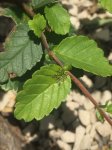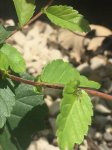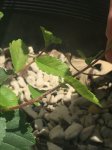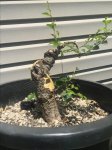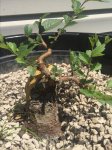My Chinese elms are just about the first things to pop buds. Like clockwork - 2nd week of February.
It's not just about letting the tree throw a long shoots. You have to let it extend, extend, extend... until it stops. Then the leaves harden. Then it sits there for about six weeks doing nothing (absorbing photosynthetic energy). And then, starting with the tips of the strongest branches, you will see it is getting ready to push buds again - while there is no sign of bud push on interior or weaker branches. BEFORE it pushes buds again, you reduce the branches back to two buds. The timing is really important because you have to let the tree rest and accumulate strength before you prune it. Energy is generated by photosynthetic mass. If you just prune a branch whenever it gets long, the tree has no chance to benefit from all of the growth. It pushes growth... prune. Then it pushes growth... prune. And each time the growth gets progressively weaker and more spindly and more localized to just the primary branches and you may experience branch die-back or weakness in the interior or lower branches.
The other benefit from pruning back to two leaves is that it forces the tree to push two opposing buds - doubling your ramification each time. Do this twice a summer, and at the end of two years you have 16x as many branches as you started with. 1, 2, 4, 8, 16, etc. And of course, by the time you have 16x as many branches, the energy of the tree is being split 16x as many ways, so you get much less shoot extension and much shorter internodes (and smaller leaves) each time you do this.

